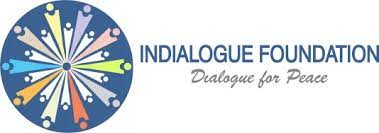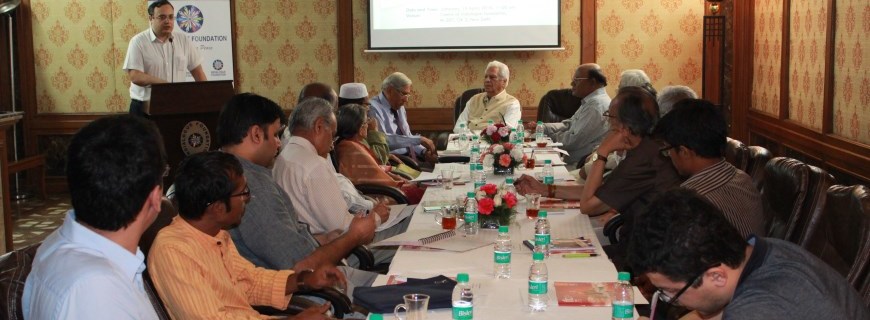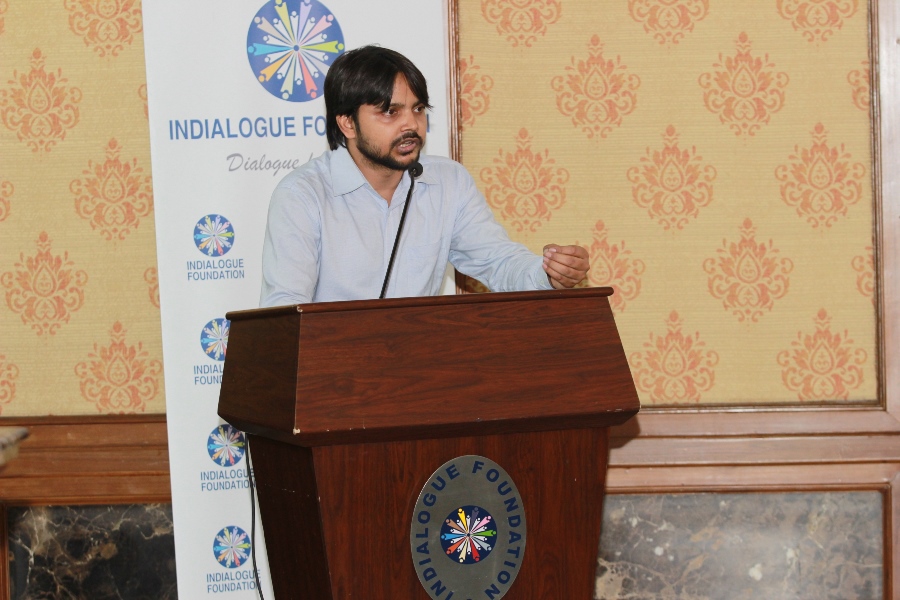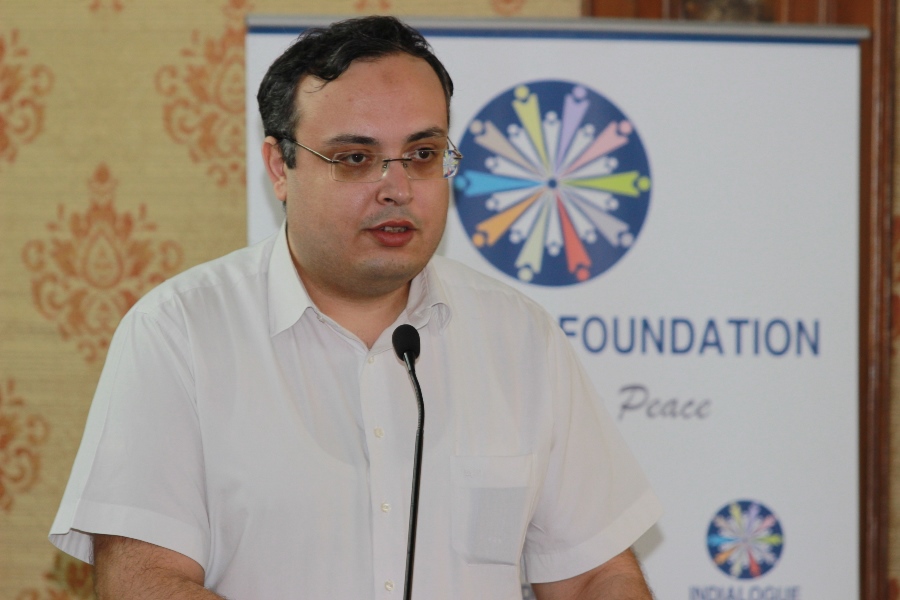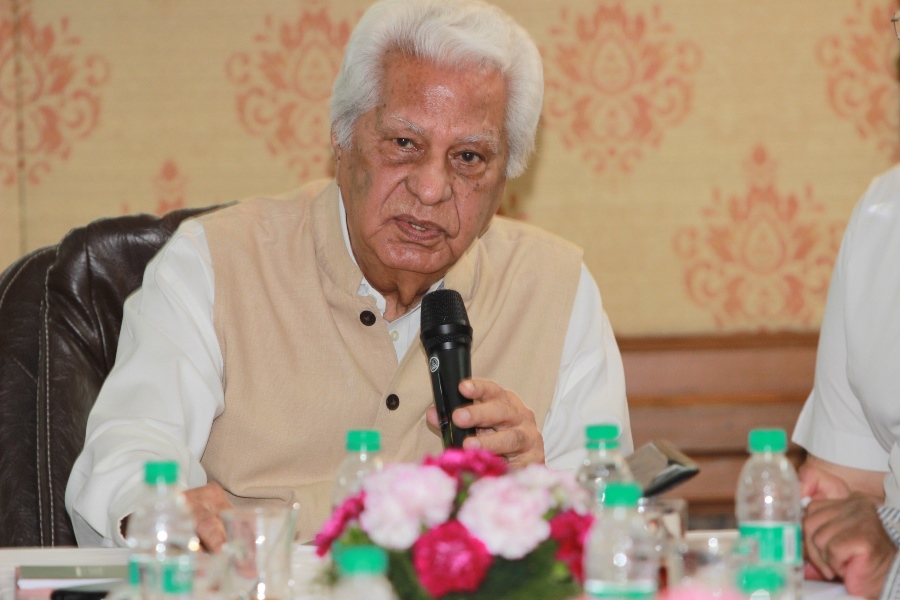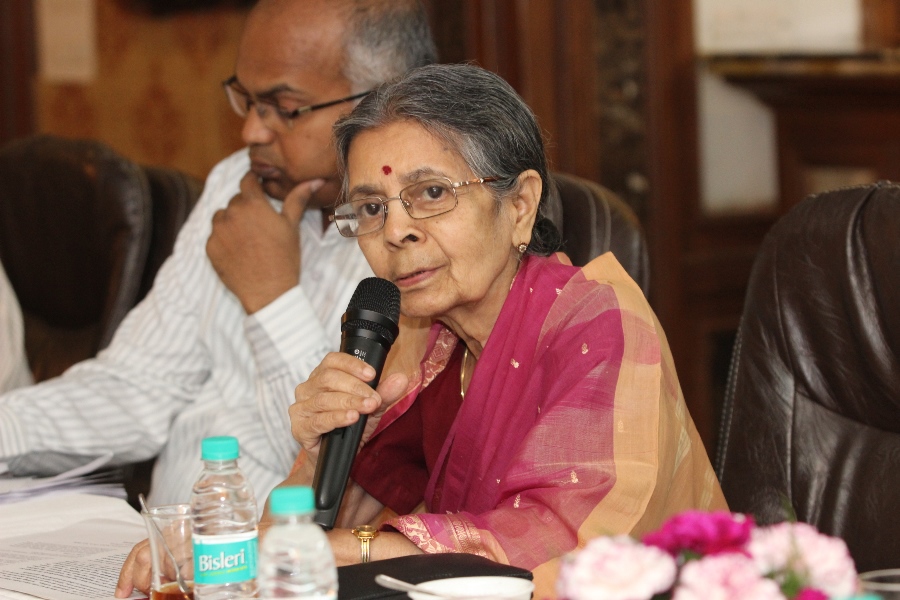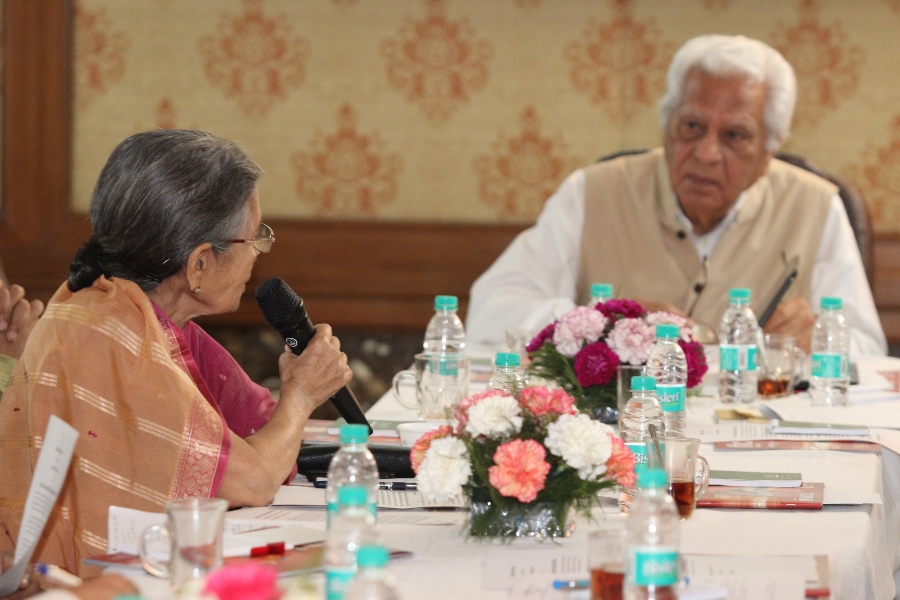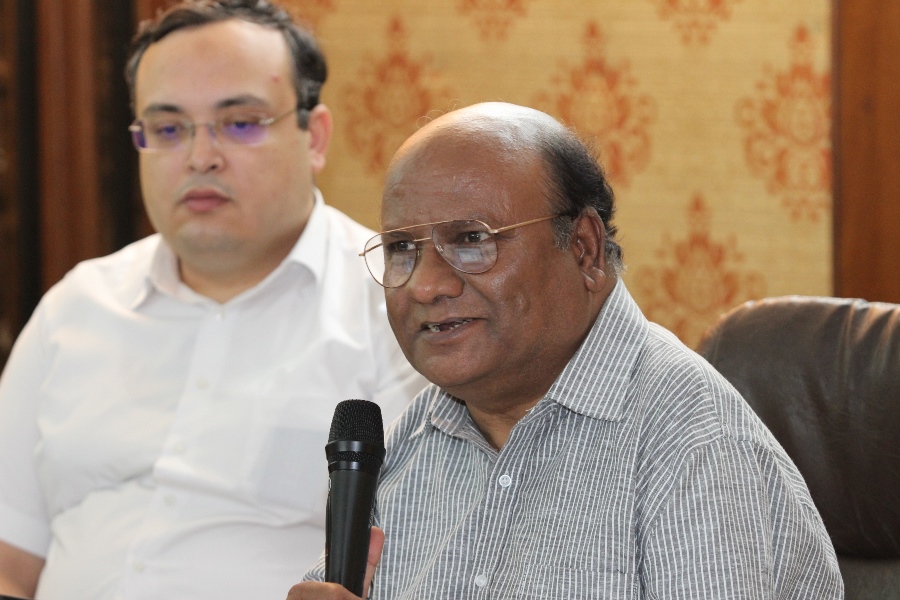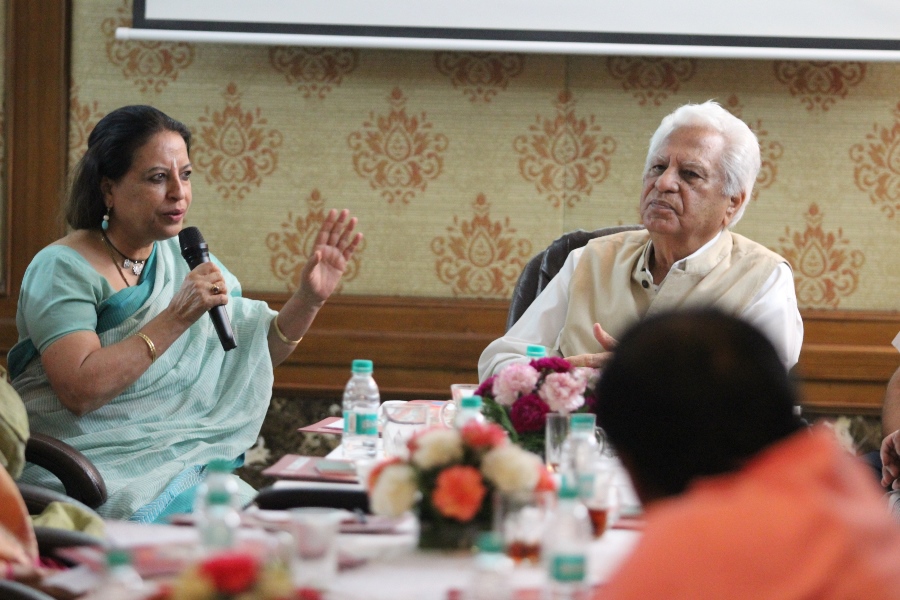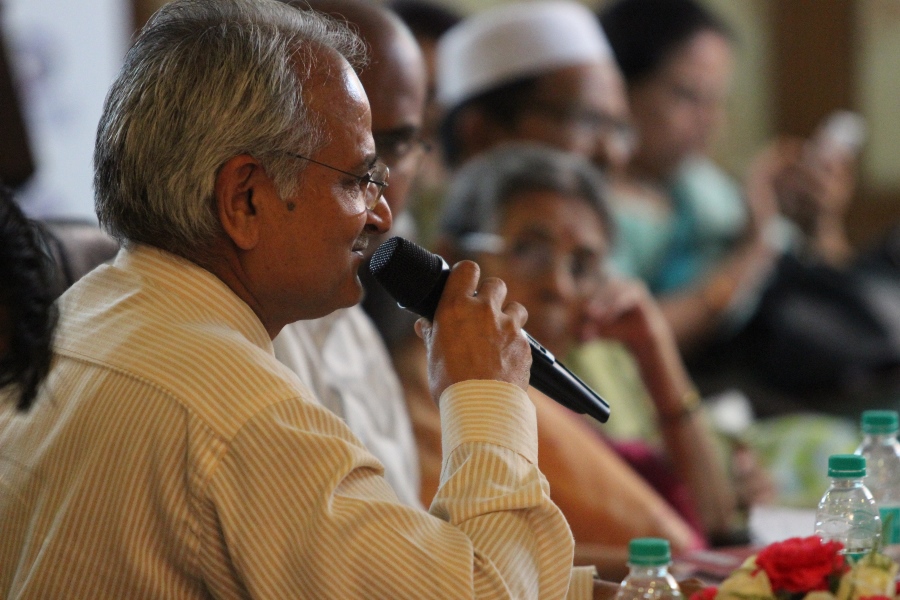NEW DELHI, 16/04/2016: Indialogue Foundation (A forum for dialogue and peace) convened a round table discussion on “The Role of Arts and Culture in Promoting World Peace” at the centre of Indialogue Foundation, M-207, GK 2, New Delhi, to explore values of arts and culture in promoting peace. Indialogue Foundation believes that peace has always been an aspiration, ideal and duty. However in the current fast-paced world peace is becoming a scarce commodity. An important challenge is to find a suitable way of realizing the ideal of “Unity in Diversity” by assimilating the rich wealth of diverse culture of the world, and also trying to avert” fear reflex” when we are confronted with “otherness”.
The arts promote peace because of their emotive nature. They can create a desire and commitment to work for peace and avert war. Cultures emerge as an essential for sustainable development and lasting peace. In fact, equitable progress and social cohesion are possible by practicing a culture of universal human values. However, the road to inclusive socio-economic development, environmental sustainability, peace and security are grounded in culture. It determines and creates paths for lasting conflict resolution and healing. By conceptualizing these ideals Indialogue Foundation called for a roundtable discussion on “The Role of Arts and Culture in Promoting World Peace”
Objective:
The principle objective of this discussion was to bring together individuals from key organizations, including government officials, academics and civil society actors, in order to share thoughts and ideas on how best to address the challenges and the Roles which Arts and Culture can potentially play in Promoting World Peace.
Presenters:
The round table presenters were from government officials, academia, civil society actors, key organizations and the concerned individuals who have been working on the issue. It was quite a quality group as the aim was to provide opportunity for open and free-flowing discussions where they could explore the core idea in a larger context, identify potential drawbacks and challenges, and examine opportunities.
The moderator was professor M. M. Verma (president& founder of interfaith foundation India).
Presentation:
A summary of the presentations highlighting the key messages from the panellists is given below.
The roundtable discussion began with an introduction by Bilal Acikgoz, President, IF about what Indialogue Foundation is, its role in unfolding transformation and deepening the understanding of the people and self through its intercultural and interfaith dialogue. The IFLC (International Festival of Language & Culture) has been furnished briefing.; a mega cultural event which about to be happening on 7 May, 2016. Some short related videos has also been played on the projection screen.
In an opening statement, Professor M. M. Verma has cited verses from religious scriptures in the support of peace and diversity and asked the first panellist to comment on the topic.
By exploring the etymology of round table Prof. Hema Raghvan pointed out in her remarks the aesthetic appeal of arts and culture. She emphasized that the aesthetic perception plays a foundational role because the authenticity of aesthetic experience, through its directness and immediacy, provides a powerful means of reappraising cultural experience by digging beneath the layers of accrued meanings and cognitive habits. She, by quoting different litterateurs and philosophers argued in the words of Immanuel Kant that aesthetics as a field giving priority to form over function. She asserted that knowledge is not something that is created merely by outside institutions but also by our natural constitution. The seat of judgement now moved from medieval reasoning toward the idea that human intuition could be a source of knowing. And aesthetics began to develop as a university discipline.
Major Saigal; in his brief comment he has focused on pragmatic approaches, practical and doable ways to ensure the pace in the society. Thus we should decide what to inculcate our coming generation and what not to.
Prof. R.P.Singh (JNU); in his detailed presentation he has discussed the arts and culture through philosophical approaches as he notes;
- There are various lineages to peace- theological, cultural, artistic, political, war/military, diplomatic, international relations, and so on.
- Peace is an occurrence of harmony characterized by the lack of violence and freedom from conflicting behaviors.
- Harmony proceeds from our co-operative effort to increase strength and vitality, with constant vigilance to be free from envy and hatred.
- Conflicting tendencies arise because of different versions and visions of good life, values and convictions representing diversity of cultures.
- Pluralism is the ethos of multiculturalism, globalization and the New World Order of post cold war era. It is in the light of the plurality of perspectives as envisaged in Indian tradition along with Kantian universalism in the multicultural and globalized world that peace can be ensured. On the one hand, there are the pluralities of Nation- States, of world-religions, of large cultural, ethnic, linguistic identities, with numerous internal differences; on the other there is an overwhelming sense of One World i.e. the world coming together through technology. The idea of the cosmopolitan, the Global Village, as an ideal, is widely valued.
Nilakshi Rajkhowa (Bahai Office of Public Affairs); She talked on the issue through the scope of Bahai’s approach and given a discretions of the initiatives that has taken by the organization she was affiliated with.
Professor N. K. Ambasht (Former pro vice-chancellor of Rajasthan University) evaluated the issue of peace by exemplifying through various tribal conflicts. He pointed out;
- Culture, from anthropological perspective is basically a man and his work.
- The synthesized idea is to integrate the segregated people.
- The simpler culture must be adopted as to live and let live.
Professor Zai Kamal; by reciting some Urdu couplets he emphasized on the chishtiya order’s contribution in realizing the peace. In consonance of his thought Mr. Ruman Hashmi has also stressed on the same.
Mr. M. P. Lele (Former Additional Director, All India Radio) has noted that the peace transcendence the physical and geographical limits. Fr. Edwin Victor ( Vidya Jyoti College of Theology) has quoted from Bible to represent the children as the agents of peace. Professor Madhu Kumar equated between the language of the heart and the language of the art, and a religion can only be replaced by religion, she added. Principal Promod Kumar (Jagran Public School) and Professor Chand Bhardwaj, unfortunately could not get ample of time to interact because the extreme time constraints, although they have made a common point that the art and culture promotes peace altogether.
Finally, taking some productive and proactive interventions from the other participants the moderator has summarized the discussion and asked Mr. Ashutosh Kumar Pandey (an intern at Indialogue Foundation) to propose the vote of thanks.
Page Hits–835
